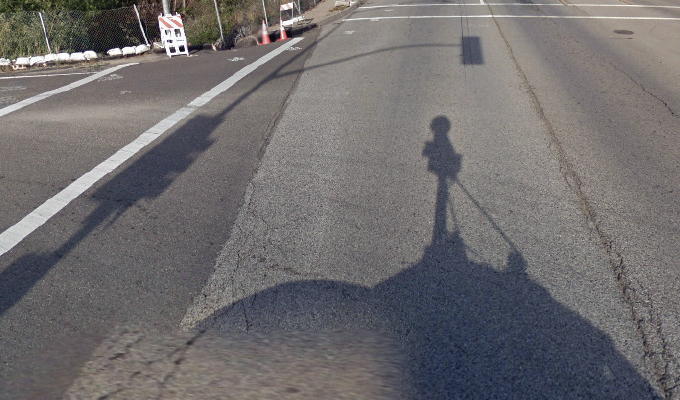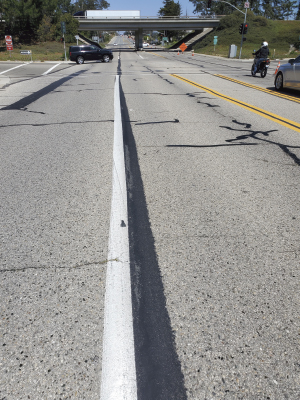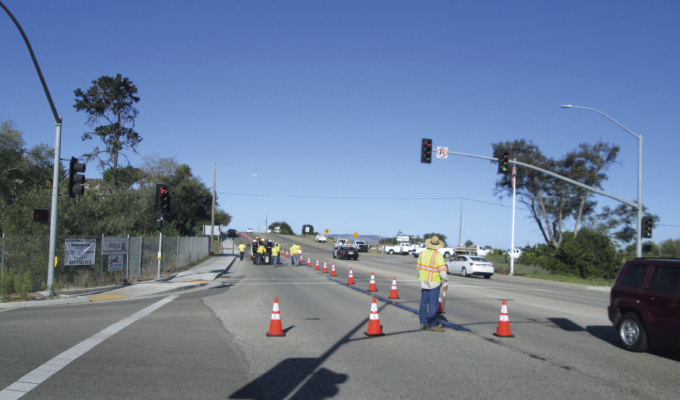The Clark Avenue interchange is a highly traveled, four-lane road serving as a primary access point to California State Route 135 in Santa Barbara County. It is also an arterial roadway for the Town of Orcutt. The one critical problem that the County needed to address was the deterioration of the longitudinal paving joint at and around the Clark Avenue Interchange (Figure 1). This type of deterioration can often lead to premature pavement failure if left untreated.

THE CHALLENGE
“Considering standard crack sealing to address this type of problem was not an option. The deterioration that was occurring to the joint progressed beyond the point of performing a typical crack sealing treatment,” says North County Road Maintenance Supervisor for Santa Barbara County Andy O’Brien. “An application using a cold mix or HMA was also not a viable option due to high traffic volumes. Extensive road closures would have caused severe disruption to traffic flow.”
Finding the right solution would be a challenge. The repair material is needed to treat and preserve the pavement, but also not create significant disruptions to traffic flows or safety hazards when applied. According to O’Brien, “We were looking for a repair material that could be quickly and easily installed, flexible, durable, and capable of receiving road paint markings that would hold up well in high traffic.”

THE SOLUTION
Through a product demonstration, Mastic One® by Crafco met all the requirements because of its ease of installation, the proven service life of more than 5 years, and the ability to receive traffic when cooled.
Almost 6 years have transpired since the County installed 4200 lbs of the hot Mastic One material to treat the longitudinal joint cracking at and around the Clark Avenue Interchange (Figure 2). The work started at Foxenwood Lane on the west side of the SR 135, applying 200 yards of the hot Mastic One at a time with a drag box. This time and labor-saving installation method continued under SR 135, ending at the northbound on/off ramps.
The County Public Works Department maintenance crew recognized that utilizing Mastic One to treat longitudinal joint raveling resulted in significantly less traffic interruption, less equipment and crew, less cost and time spent, and an improved long-term repair. These benefits along with ensuring a smooth ride for vehicles provided an unrivaled solution to one of the most prevalent forms of distress in asphalt roads.
“The performance has been excellent,” says O’Brien. Mastic One has performed how we expected. The unraveling of the joints/seams has stopped. Another concern was how the mastic material would accept traffic line paint. To our delight, the paint has adhered to the mastic material exceptionally well.” (Figure 3)
CLOSING THOUGHT
The performance of Mastic One on this project has led the County of Santa Barbara to use the repair mastic on other projects. Mastic One enabled the county to complete the repair in a safe, effective, and efficient manner.
For More Information:
For more information about Mastic One, contact Chris Vacca at chris.vaccca@crafco.com, or visit www.crafco.com.
Modern Contractor Solutions, May 2023
Did you enjoy this article?
Subscribe to the FREE Digital Edition of Modern Contractor Solutions magazine.



